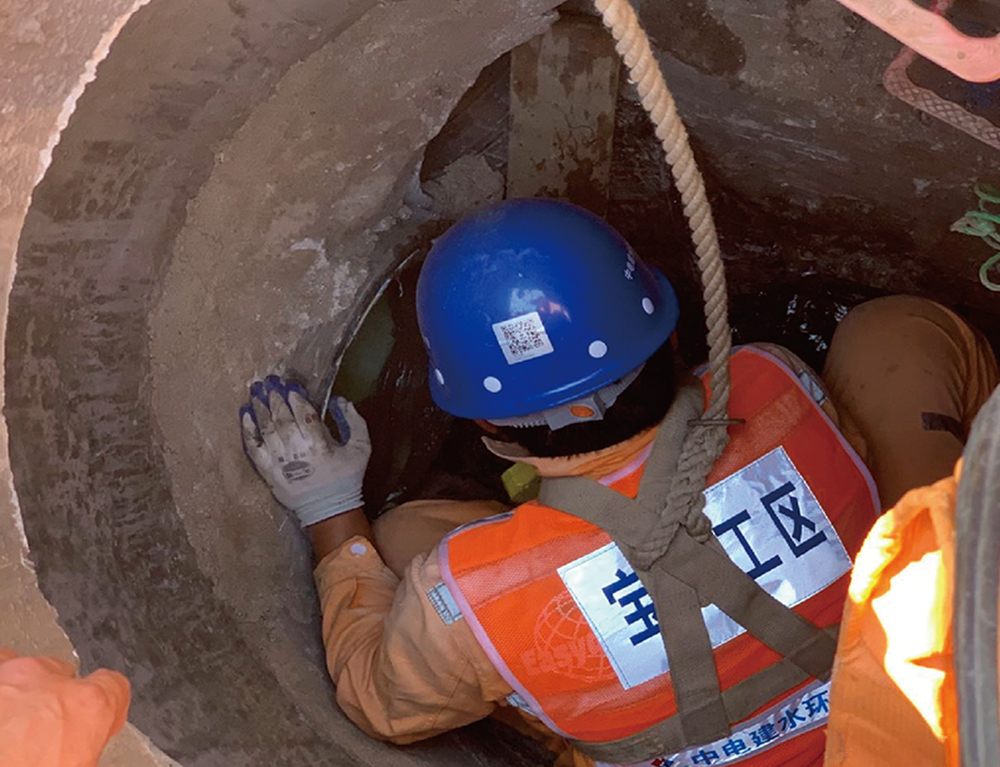
The pipeline to be repaired needs pretreatment, high-pressure water flushing and CCTV detection before construction. It is required that the inner wall of the original pipe to be repaired has no obvious attachments, no sharp objects, burrs and other obvious protrusions, no holes larger than 3cm*3cm, no water seepage, and the misalignment of the pipe mouth should be treated in transition. After the air bags of the upstream and downstream pipes are blocked, thousands of sewage from the pipes to be repaired need to be pumped. Double check the length to be repaired.
Pull in the bottom film, the bottom film is specially developed for CIPP pull in process film, with high axial strength, puncture resistance, anti-sewage corrosion, smooth side down, slightly rough side up, can well reduce the friction coefficient between the hose material and the bottom film, so that the hose material in the pull in process becomes more smooth. The length of the bottom film should be longer than 3 to 5 meters of the UV curing hose to be used, and the two ends should be fixed after pulling in. The selection of bottom film is shown in Table 1
| Diameter of pipe to be repaired | Recommended base film width | Length specification | Diameter of pipe to be repaired | Recommended base film width | Length specification |
| DN200 | 45cm | 250m/roll | DN1000 | 120cm | 250m/roll |
| DN300 | 45cm | 250m/roll | DN1200 | 120cm | 250m/roll |
| DN400 | 60cm | 250m/roll | DN1350 | 130cm | 250m/roll |
| DN500 | 70cm | 250m/roll | DN1400 | 130cm | 250m/roll |
| DN600 | 80cm | 250m/roll | DN1500 | 130cm | 250m/roll |
| DN800 | 100cm | 250m/roll | DN1600 | 150cm | 250m/roll |
| DN900 | 100cm | 250m/roll | DN1800 | 150cm | 250m/roll |
Make the first binding head with the binding belt, as shown in Figure 1, and prepare for pulling in the hose. Remember to put the binding head cloth in advance. If there is a middle well, the binding head cloth should be put in advance, as shown in Figure 2. Then pull in the hose, pull in speed should be smooth, slow, pull in speed should not be greater than 5m/min, see Figure 3. Make sure the hose stays above the bottom film when pulling in. It is recommended to use auxiliary sliding roller equipment to reduce problems such as hose breakage, excessive creasing, and pipe puncture, as shown in Figure 4. It is recommended that the length of both ends of the hose be 40 to 50cm longer than the pipe port. Too short a hose is difficult to stick with the original pipe at the pipe port, which affects the repair effect.
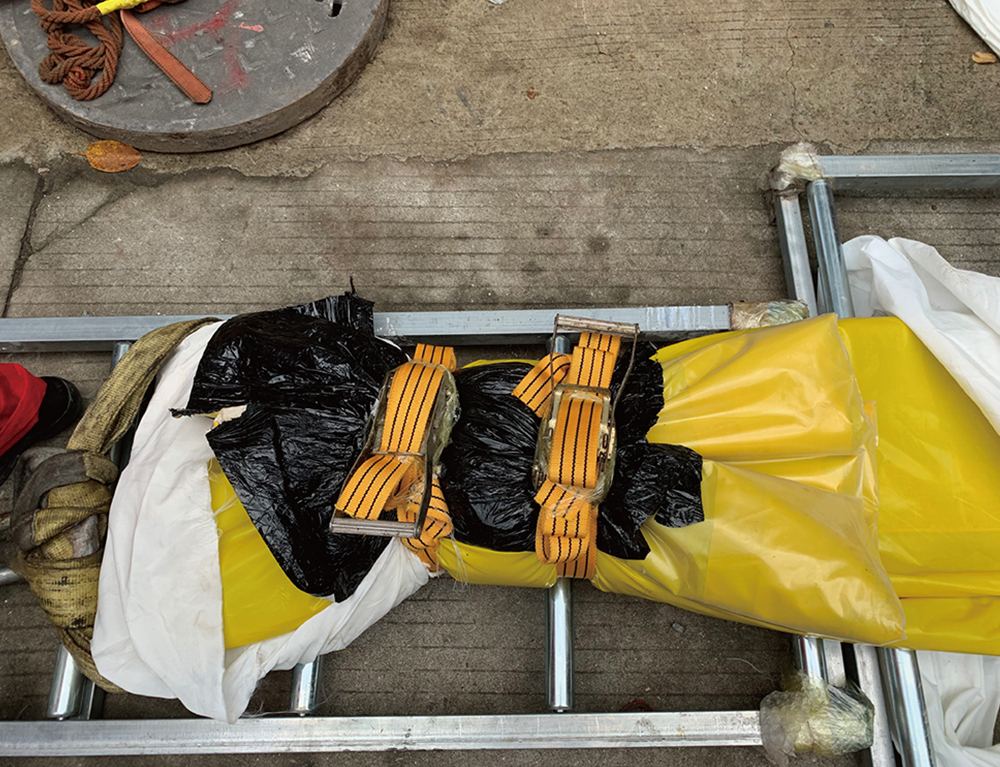
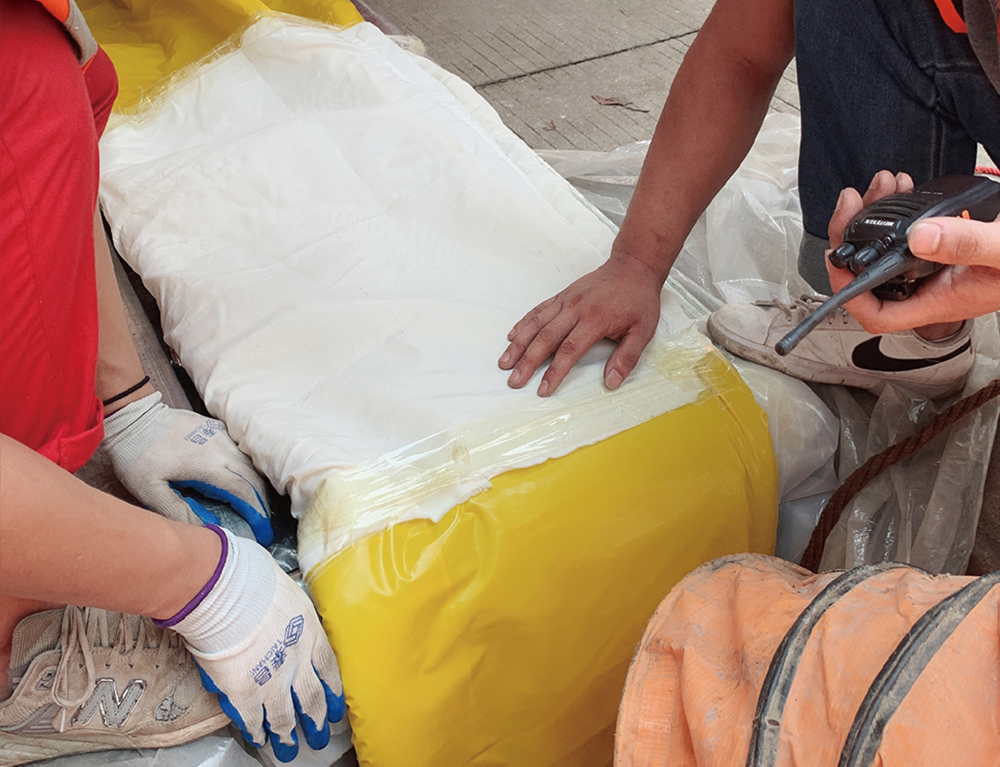
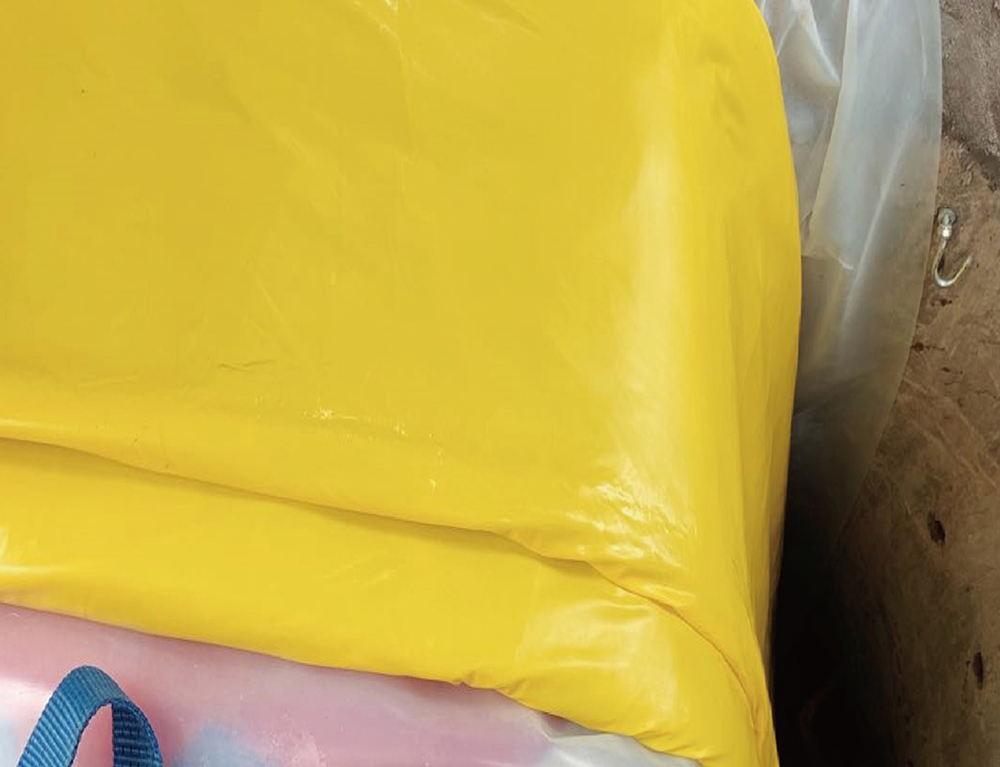
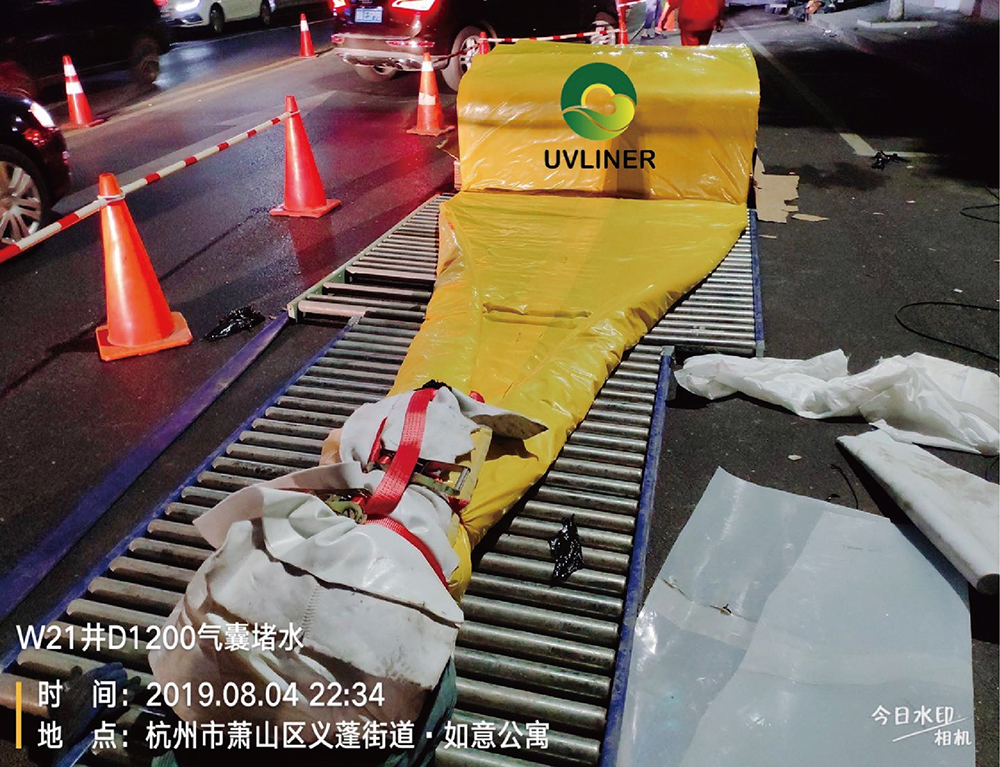
Install the tie, inflate, and feed into the lamp holder. This step is a very critical step, if the head is not firmly installed, the later pressure may rush off, affecting the construction progress. Therefore, the fixing of the head should be completed in strict accordance with the training of the equipment manufacturer. After the lashing is completed, cut the exhaust ports of about 2-3cm in length at the directions of 3 o 'clock, 9 o 'clock and 12 o 'clock of the hose material respectively. The bayonet of the lashing shall be located at the 12 o 'clock direction of the tying head, as shown in Figure 5 and Figure 6.
| DN | Minimum operating pressure recommended |
| 300~500 | 400~800mbar |
| 500~600 | 300~600mbar |
| 600~800 | 200~500mbar |
| 800~1000 | 200~350mbar |
| 1000~1800 | 100~300mbar |
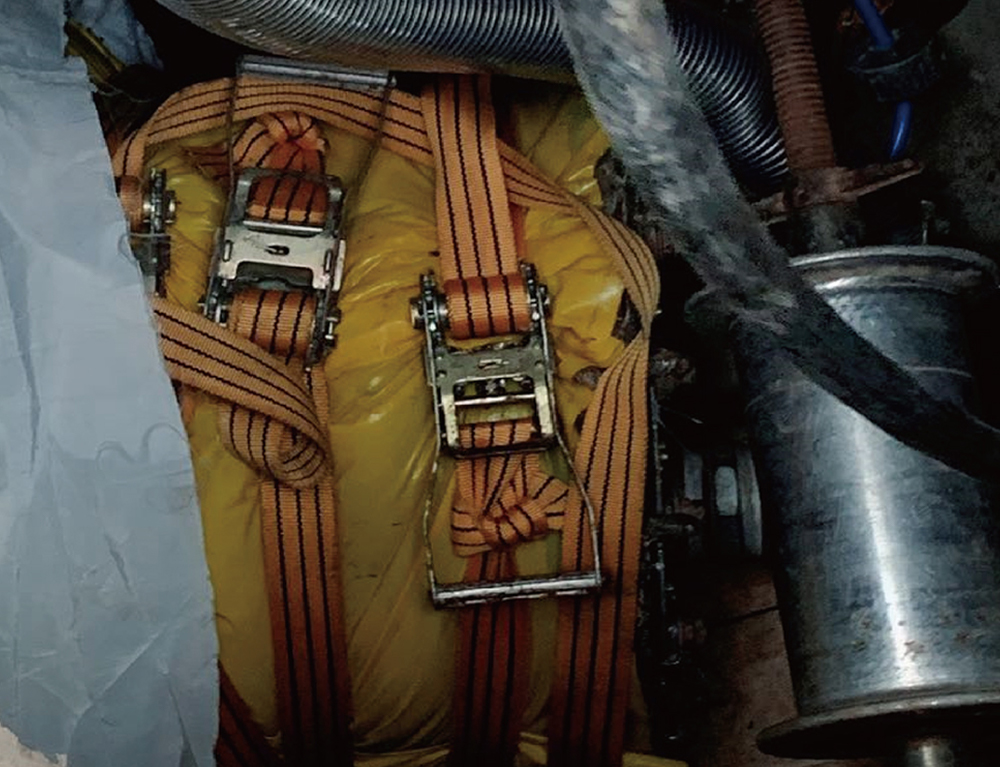
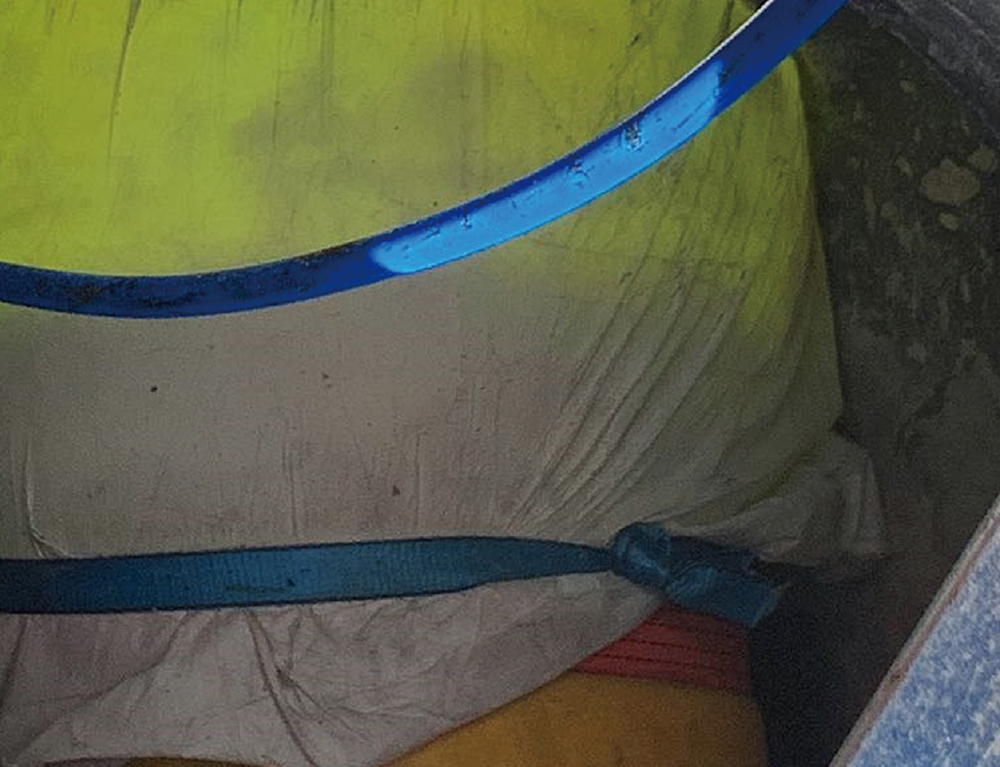
Turn on the UV lamp, set the curing speed, and start the curing process. It is not easy to set the initial curing speed too fast. It is necessary to observe the temperature change of the curing of the pipe mouth hose and adjust the optimal curing speed according to the recommendation of the equipment manufacturer, as shown in Figure 7 and Figure 8. The curing speed is too slow, may lead to the resin exothermic heat, resulting in endometrial adhesion, late is not easy to pull out; Or the resin local over-curing, yellow color, even cracking and other problems. Too fast curing speed may lead to insufficient UV irradiation time, resin curing is not in place, the heat release peak is not reached, and finally lead to insufficient strength of the lining tube, local white spots and other problems.
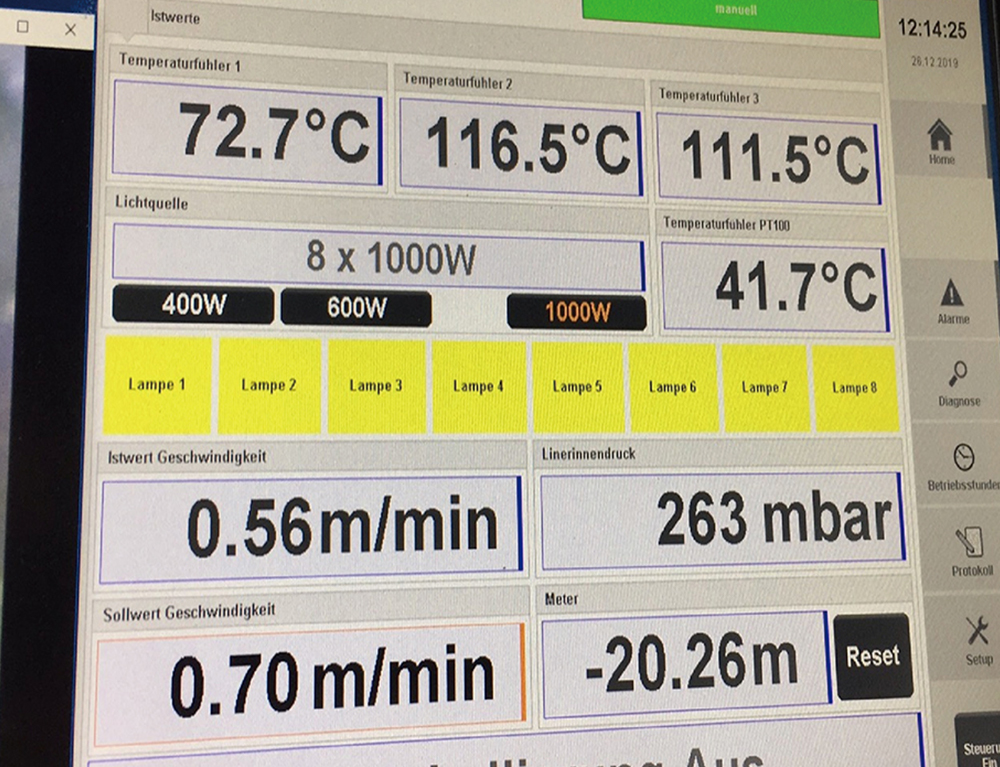

After the end of curing, after the temperature in the pipe cools to about 40 degrees, slowly relieve the pressure (such as rapid cooling may lead to the contraction of the lining pipe, may also produce shrinkage cracks, and even will be separated from the original pipe, affecting the repair effect of the lining), remove the packer at both ends, remove the light frame, and leave about 2-5cm of the pipe mouth when cutting the lining port, and then carry out anti-leakage treatment on the pipe mouth. Pull out the inner membrane, perform CCTV detection on the repaired pipeline, and keep the data as shown in Figure 9 and Figure 10.
For details, please refer to our "Product Construction Guide".

